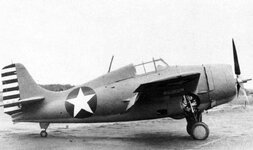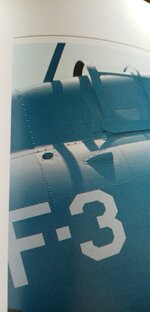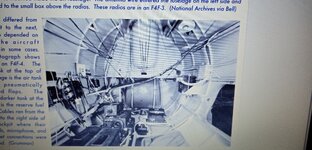jabbajindrich
Recruit
- 8
- Nov 5, 2022
Dear All,
I very appreciate some help with two F4F-4 technical issue that I am not able to identify properly. This is small airscoop on the right side behind the cockpit, respectively opened canopy, plus small round opening/hole (unknown purpose for me) in close area and located slightly higher then airscoop but within one fuselage segment.
Both feature was not intruduced on F4F-3 or 3A with the exception of last production run of 100 planes that was built in spring 1943 after ceasing production of F4F-4 serie at Grumman factory.
Many pictures of F4F-4 show this both feature but not every ones, unfortunately. It seems that this both feature was introduced gradually somewhere during second production run (BN 5030 – 5262) in early Spring of 1942, i.e. not from the beginning. Several pictures show F4F-4 without airscoop as well as round hole (aproximately till Guadalcanal campaign), some only with the round hole and mostly ones with both feature.
For example – picture of white 10 of VF-3 (BN 5149) from Midway or black 41-F-8 of VF-41 (BN 4084) from April 1942 clearly show planes without any of a/m features.
On the contrary, F4F-4 black 13 of VF-6 (BN 5193) from the beginning of Guadalcanal campaign has only round opening/hole and no unit-marked F4F-4 of BN 5262 (served for testing of new system od double flaps) as last machine od second production run has already both fearures,
Well, there is several related questions,
a/ when was airscoop officialy intruduced and based on what (some technical USN bulletin or so)?
b/ purpose of round opening/hole (perhaps first unsuccessfull attempt for better ventilation of radio and other avionic equipment in fuselage, my guess)
Many thanks in advance.
Jindrich Nepevny,
Praha, Czech republic
I very appreciate some help with two F4F-4 technical issue that I am not able to identify properly. This is small airscoop on the right side behind the cockpit, respectively opened canopy, plus small round opening/hole (unknown purpose for me) in close area and located slightly higher then airscoop but within one fuselage segment.
Both feature was not intruduced on F4F-3 or 3A with the exception of last production run of 100 planes that was built in spring 1943 after ceasing production of F4F-4 serie at Grumman factory.
Many pictures of F4F-4 show this both feature but not every ones, unfortunately. It seems that this both feature was introduced gradually somewhere during second production run (BN 5030 – 5262) in early Spring of 1942, i.e. not from the beginning. Several pictures show F4F-4 without airscoop as well as round hole (aproximately till Guadalcanal campaign), some only with the round hole and mostly ones with both feature.
For example – picture of white 10 of VF-3 (BN 5149) from Midway or black 41-F-8 of VF-41 (BN 4084) from April 1942 clearly show planes without any of a/m features.
On the contrary, F4F-4 black 13 of VF-6 (BN 5193) from the beginning of Guadalcanal campaign has only round opening/hole and no unit-marked F4F-4 of BN 5262 (served for testing of new system od double flaps) as last machine od second production run has already both fearures,
Well, there is several related questions,
a/ when was airscoop officialy intruduced and based on what (some technical USN bulletin or so)?
b/ purpose of round opening/hole (perhaps first unsuccessfull attempt for better ventilation of radio and other avionic equipment in fuselage, my guess)
Many thanks in advance.
Jindrich Nepevny,
Praha, Czech republic
Attachments
Last edited:



